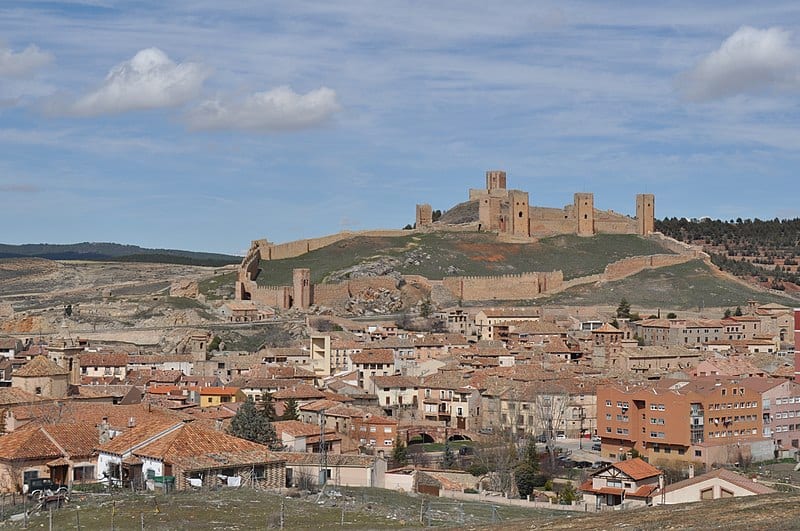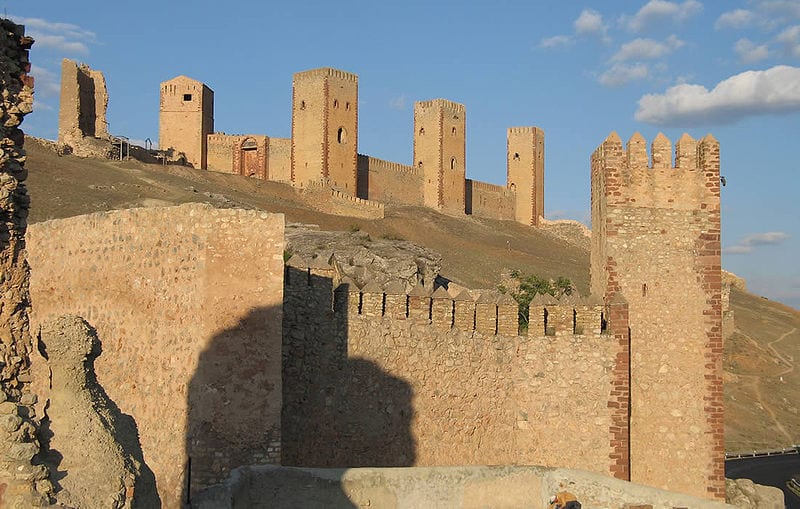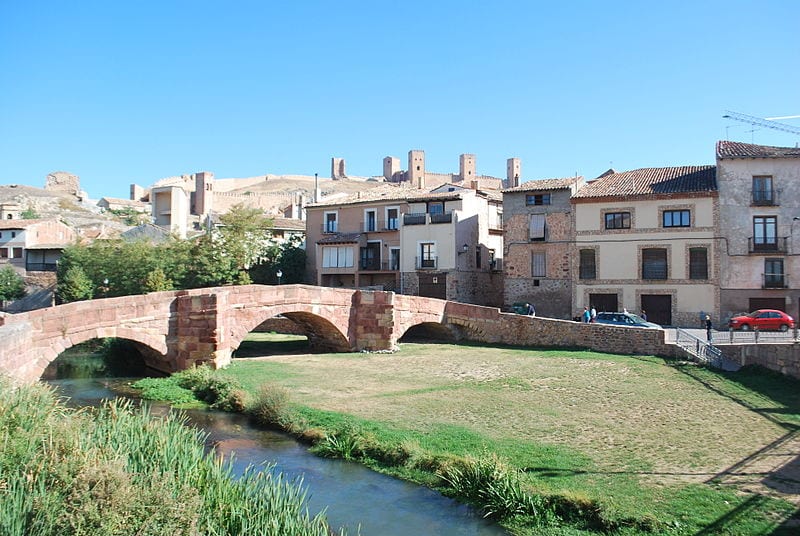
Image | Wikipedia
Molina de Aragón is one of the most beautiful medieval towns in Guadalajara (Spain). Located to the northeast of the province, it is a city with a great monumental wealth. A trip to Molina de Aragón is a journey through the Middle Ages following in the footsteps of the Cid Campeador. Arisen at the foot of its castle it preserves a Romanesque bridge, the Jewish quarter and the Moorish settlement as well as numerous Renaissance and Baroque palace-houses reflecting the splendor as the capital of the independent manor of Molina.
But, what places are essential during a trip to Molina de Aragón?
Castle- Fortress
Located on a hillside that dominates the valley, it is the most impressive castle that can be found in Guadalajara and completely marks the character of Molina de Aragón. In the castle of Molina de Aragón we can distinguish the fortress surrounded by a wall dating from the XNUMXth century and that was built by the first lord of Molina, Manrique de Lara, and the so-called Torre de Aragón that was built over the Muslim castle and this on a previous Celtiberian fort.
Access to the Castle of Molina de Aragón is through the Puerta del Reloj, which is part of the wall that surrounds the enclosure, with its watchtowers, leaving a large space inside that in the XNUMXth century housed a medieval neighborhood being Mrs. de Molina Doña Blanca Alfonso. The vestiges of the Romanesque church of Santa María del Collado are proof of this.

Image | Wikipedia
The castle itself is accessed through a door with a pointed arch. Crossing it we can check the thickness of the walls. In the parade ground there was the residence of Mr. de Molina, the stables, the kitchens, the wells, the warehouses and the dungeon. On the other hand, we can see that the towers have three floors were connected by metal stairs and had large windows with pointed arches.
From the castle we arrive at the Torre de Aragón, the second fortress with a pentagonal tower surrounded by a wall with battlements. It is a reconstruction of the XNUMXth century, although this is how the old Arab fortress and the Celtiberian fortress are located. The Torre de Aragón has three floors and three windows. At the top of the tower there is a crenellated terrace that allows you to see the spectacular region of Molina.
The visit to the castle of Molina de Aragón can be done for free (3 euros) or guided (5 euros) with minimum groups of 10 people. In the morning groups depart from the Tourist Office at 11:30 am (Calle las Tiendas, 62. Telephone: 949 832098) but it is advisable to check the days on which it can be done in addition to weekends. In the afternoon, the guided tour of the city is organized at 17:30 p.m. but the castle would not open. The Torre de Aragón, converted into an interpretation center, is visited separately (€ 2,5) after climbing a very steep slope.
Church of Santa Clara

Image | History Traveler
Near the road that leads to the outer walls of the castle-fortress, in the old town, we find the church of Santa Clara. It is documented that during the Middle Ages this church guarded numerous relics of saints and in it we can appreciate the presence of the last Romanesque blows in Spain with a single-section nave inside.
Once known as Santa María Pero Gómez, it is said that the temple was built at the end of the XNUMXth century by a gentleman named Pero Gómez who was a relative and butler of Blanca Alfonso de Molina. In memory of its founding, the temple received that name although today the church is simply known as Santa Clara as it is connected to the homonymous convent. The main access to the church is located on the side of the church, in a prominent portal that is reached by climbing some stairs.
Iglesia de San Francisco
It was founded at the end of the XNUMXth century by Doña Blanca Alfonso to be inhabited by cloistered monks following a Gothic style but throughout its history it has undergone various reforms currently featuring various styles such as a Baroque exterior and a Gothic, Renaissance, and Baroque interior. The church has a single nave and is covered with ribbed vaults resting on columns.
During the Spanish War of Independence, the French ordered the burning of Molina de Aragón and a quarter of its buildings were in ruins. The Franciscans had to abandon the monastery and it was badly damaged.
In 1836, due to the Confiscation of Mendizábal, the monks were expelled and the State converted the monastery into a Civil Hospital. Subsequently, the church was abandoned for several decades until in 1886 the Sisters of Charity of Santa Ana created a hospital for the poor here, which they called Hospital de Santo Domingo. At present the building is occupied by a nursing home run by these nuns? and by the Regional Museum of Molina de Aragón.
Church of San Gil
The church of San Gil or Santa María la Mayor de San Gil is of Romanesque origin, although it has been completely restored after suffering a terrible fire that caused irreparable damage in 1915. Until here the mortal remains of Doña Blanca were transferred from the church of San Francisco in which she said she wanted to be buried on the occasion of the Confiscation of Mendizábal but the fire destroyed everything and nothing is preserved. Neither did the works of art that were kept there.
The Romanesque bridge

Image | Wikipedia
For centuries, a Romanesque-style bridge spans the River Gallo, a tributary of the Tagus, to connect the Monastery of San Francisco with the old city. From it you can take very nice photos of Molina de Aragón. Built in reddish sandstone it is formed by three eyes.
Palacetes of Molina de Aragón
During the time of splendor that Molina de Aragón lived, numerous noble families had sumptuous palaces built there. Hence, Molina is one of the Castilian municipalities with the most palaces in the historic center: the Palacio de los Molina, the Montesoro, the Arias, the Garcés de Marcilla or the Marqués de Villel, among others.